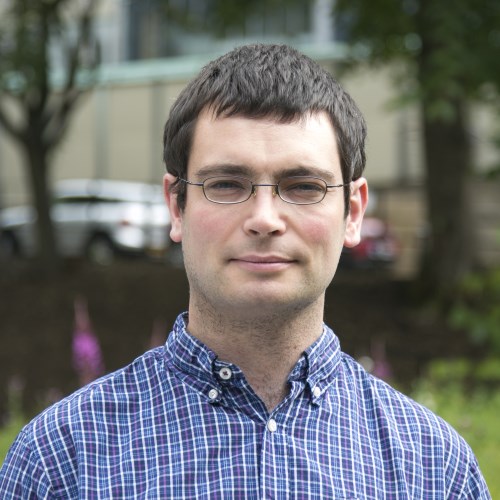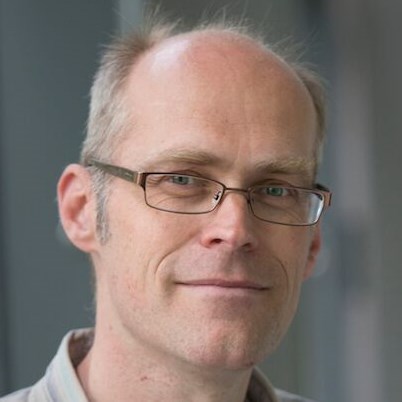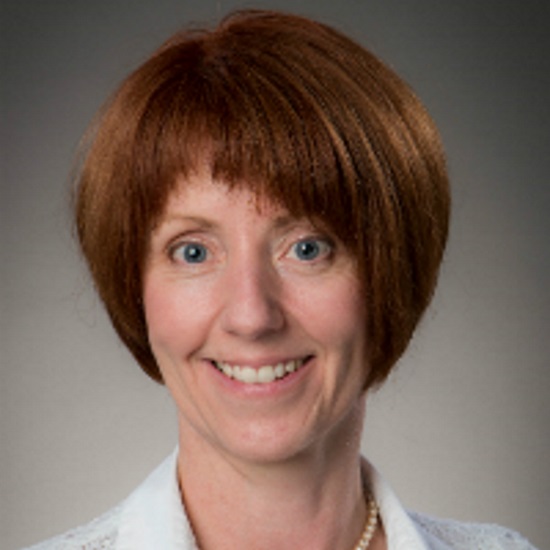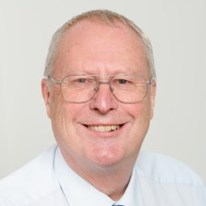Links to external sources may no longer work as intended. The content may not represent the latest thinking in this area or the Society’s current position on the topic.
The promises of gravitational-wave astronomy

Scientific discussion meeting organised by Dr Iain Martin, Professor Nils Andersson, Professor Carole Mundell and Professor James Hough OBE FRS.
The recent detection of gravitational waves from astrophysical sources opened a new window to the universe. This breakthrough has generated enormous excitement, across the scientific community and among the general public. The aim of this meeting, which brings together gravitational-wave experts and leading astrophysicists, is to discuss the current status and future prospects of gravitational-wave astronomy.
Recorded audio of the presentations will be available on this page soon.
Organisers
Schedule
| 09:00 - 09:05 | Welcome and introduction | |
|---|---|---|
| 09:05 - 09:30 |
Gravitational Wave Astronomy: Delivering on the Promises
The black-hole coalescences detected so far by LIGO have begun to deliver the promises of the long development of such detectors, going back to the 1970s. As with many fields of astronomy, gravitational waves have already revealed systems we did not know about: binaries of black holes with total masses up to 70 solar. Virgo has now joined LIGO in observing, and as the two projects improve their sensitivity, and as new detectors in Japan and India join, we can expect many more surprises, and the start of multimessenger GW astronomy. But the range of these detectors is still limited to our cosmological near neighbourhood, so the field is planning ambitious new instruments, including third-generation (3G) detectors that will require worldwide collaborations just to build. And ESA, impressed by the success of LISA Pathfinder, is now fast-tracking LISA, with NASA as an expected junior partner. Complemented at low frequencies by pulsar timing observations by SKA, LISA and 3G detectors will reach to very high redshifts, and will really deliver on the promises. 
Professor Bernard Schutz, Cardiff University, United Kingdom

Professor Bernard Schutz, Cardiff University, United KingdomBernard Schutz (PhD Caltech ’71) joined Cardiff University in 1974 and helped build the UK-German GEO gravitational wave collaboration. He left Wales to become a founding director of the Max Planck Institute for Gravitational Physics (Albert Einstein Institute) in Potsdam, Germany, in 1995, which now pursues theoretical and experimental research on two sites. At the AEI he developed numerical relativity simulations and data analysis techniques for LIGO. After retiring in 2014 he returned to Cardiff as the first interim Director of the Data Innovation Research Institute. He is a founding member of the LISA project and a member of the LIGO Scientific Collaboration Executive. Author of A First Course in General Relativity, two other books, and almost 400 publications, he has been elected a Member of the Learned Society of Wales and of the Leopoldina (Germany), and was awarded the Amaldi Gold Medal of the Italian Society for General Relativity and Gravitation. |
|
| 09:30 - 09:45 | Discussion | |
| 09:45 - 10:15 |
LIGO: Accomplishments to date, and plans for the future
The field of gravitational-wave astronomy has been launched by LIGO’s recent detections of multiple binary black hole coalescences. The instruments capable of detecting the minute strains due to these distant cataclysmic events must operate at the limits of fundamental measurement science, exploiting Einstein’s contributions to physics in several domains to enable the verification and exploitation of his theory of general relativity. The future holds great promise. The Advanced LIGO instruments are still a rough factor of two less sensitive than their design. Because the amplitude of the strain is sensed, at design sensitivity the volume of space within reach – and the rate of detections – will be roughly 8 times greater. Advanced Virgo in Italy has just started observing, and the data from the Virgo and LIGO instruments are analyzed together, enabling better localization of sources and offering the potential to measure polarization. KAGRA in Japan is expected to join the network in a few years, and LIGO India is planned to come on line in 2024. Incremental improvements in all these detectors is expected, offering another factor of 2 to 3 in sensitivity on this time scale. The next step forward, to reach a factor of 10 improvement (so 1000-fold in rate) over the current instruments, will require new observatories. As the signal scales with length, but most noise sources remain unchanged, moving beyond the current 3-4 km arm length is one necessary element in the new observatories, along with supporting the capability of cryogenics (to reduce thermal noise) and multiple parallel instruments to focus on different signal frequencies. This will require a major investment by participating countries, of the scale of Large telescopes, and requires a broad gravitational-wave science contribution to, and appreciation by, the scientific community. 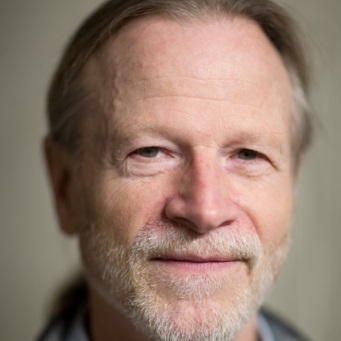
Dr David Shoemaker, Massachusetts Institute of Technology, United States

Dr David Shoemaker, Massachusetts Institute of Technology, United StatesDavid Shoemaker is a Senior Research Scientist at the MIT Kavli Institute. He received degrees from MIT in 1980 on contributions to the COBE cosmic background satellite, and from the Université de Paris in 1987 on methods for the interferometric detection of gravitational waves. He served as the Leader for the Advanced LIGO Detector Project, and was elected the LIGO Scientific Collaboration Spokesperson in 2017. He is a Fellow of the American Physical Society, and shared the Milner and Gruber prizes as well as the Princess of Asturias Award for Technical and Scientific Research for the detection of gravitational waves with his LIGO Scientific Collaboration colleagues. |
|
| 10:15 - 10:30 | Discussion | |
| 11:00 - 11:30 |
Mirror suspensions in ground based gravitational wave detectors
Suspension systems for the test masses are critical systems in ground based gravitational wave as they isolate them from ground vibrations and other external motion as well as minimising thermally induced motion, allowing the test mass motion to be sensitive to gravitational wave signals. Glasgow University has been at the forefront of developing quasi-monolithic fused silica suspensions for more than 20 years. These mirror suspensions are fused silica test masses suspended on silica fibres made with dedicated in-house tooling to the correct shape and dimensions, which are welded to interface pieces called ‘ears’. These interface pieces are jointed onto the test masses using hydroxide catalysis bonding. Such mirror suspensions are developed for a range of fringe experiment, such that mirrors ranging from 1 g to 160 kg can be suspended in this way. Now Glasgow researchers are also using their expertise to develop similar quasi-monolithic mirror suspensions in silicon and sapphire for future generation detectors that will operate cryogenically. In this presentation an overview of the development and status of silica, sapphire and silicon quasi-monolithic suspensions will be given with some detail on the technology. 
Dr. Marielle van Veggel, University of Glasgow, United Kingdom

Dr. Marielle van Veggel, University of Glasgow, United KingdomDr Mariëlle van Veggel is a Royal Society Dorothy Hodgkin Research Fellow at the Institute for Gravitational Research (IGR) at Glasgow University. She specialises in materials research for the final stage of the mirror suspensions in both current and future ground-based interferometric gravitational wave detectors. In particular she focussed her research on the characterisation and development of jointing techniques used in the final stage of these mirror suspensions as well as developing these techniques for spin-off applications. Examples of materials jointed are fused silica, silicon and sapphire. Mariëlle started as a post-doc at IGR in 2007, after having completed both and master’s degree and PhD in mechanical engineering at Eindhoven University of Technology in the Netherlands. Her PhD subject was the opto-mechanical design of an angle monitoring system part of the payload on the GAIA satellite. This system was almost entirely made of silicon carbide. |
|
| 11:30 - 11:45 | Discussion | |
| 11:45 - 12:15 |
Mirror coatings for future gravitational wave detectors
Gravitational waves are detected by measuring length changes between the test-mass mirrors in the detector arms. Brownian thermal noise is a motion of the atoms of a material due to it’s intrinsic temperature. In future gravitational wave detectors, Brownian thermal noise of the mirrors and in particular of the highly-reflective coatings, will limit the sensitivity to distance changes and therefore the ability to measure more gravitational wave signals from more distant sources. Therefore, the development of coatings with low thermal noise which at the same time meet the requirements on the optical properties is of great importance. This talk will give an overview about the current status of coatings and of the different approaches for coating improvement. 
Dr Jessica Steinlechner, University of Hamburg, Germany

Dr Jessica Steinlechner, University of Hamburg, GermanyJessica Steinlechner is a post-doc at the University of Hamburg and the University of Glasgow. Her research focuses on the development of state-of-the-art mirrors for gravitational wave detectors, where low thermal noise and low optical absorption are critical. Her PhD focussed on the development of a new method for measuring optical absorption using optical cavities. During a post-doc in Glasgow she has extended her work towards characterisation and optimisation of further material properties such as mechanical loss, and to developing coating designs which optimise both the thermal and optical properties of materials to enable better sensitivity to gravitational waves. At the Institute for Laser Physics in Hamburg she is studying coating fabrication procedures using pulsed laser deposition. Other research interests include the application of coatings with excellent optical and mechanical performance to other areas such as opto-mechanics (e.g. radiation pressure noise experiments, quantum noise experiments) and in industry for development of optical components with a high laser-damage threshold. |
|
| 12:15 - 12:30 | Discussion |
| 13:30 - 14:00 |
Astrophysical origin of the Gravitational Wave detections
How did LIGO’s black holes form? What made it possible for them to be so heavy and so close, such that angular momentum loss through gravitational waves made them spiral in and merge? What are the fundamental lessons that they can teach us about the lives of the massive stars were their progenitors? The talk will briefly review the main formation scenarios that have been proposed to date and discuss the generic challenges that all of them face, followed by an expansion on the more recently proposed chemically homogeneous formation scenario and briefly mention some of the ideas for EM counterparts for binary black hole mergers. 
Professor Selma de Mink

Professor Selma de MinkSelma De Mink is a MacGillavry assistant professor at the University of Amsterdam, lead of a theoretical stellar astrophysics research group and PI of the ERC program BinCosmos. She obtained her PhD cum Laude at the University of Utrecht after which she was awarded a Hubble Fellowship, which she took at Space Telescope Science Institute and Johns Hopkins University, followed by a combined Einstein and Princeton Lyman Spitzer fellowship, which she took at the Carnegie Observatories and Caltech University, followed by a Marie Skłodowska-Curie reintegration fellowship. IN 2017 she was awarded the 2017 MERAC prize for theoretical astrophysics by the European Astronomical Society. |
|
|---|---|---|
| 14:00 - 14:15 | Discussion | |
| 14:15 - 14:45 |
The role of numerical relativity in the detection of gravitational waves and its future as a tool for astrophysical discoveries
For decades, the numerical relativity community worked to prepare for gravitational wave observations. Gravitational wave astronomy has arrived. I will review the role that numerical relativity played in the first detections and characterizations of gravitational waves. I will also provide my views on the future of numerical relativity and its potential for producing unique tools for astronomical discoveries. 
Professor Pablo Laguna, Georgia Institute of Technology, United States

Professor Pablo Laguna, Georgia Institute of Technology, United StatesLaguna is a computational astrophysicist, investigating astrophysical phenomena involving binary systems with black holes and/or neutron stars. These systems provide the ultimate expression of Einstein's theory of General Relativity. Laguna's computational studies are contributing to a new astronomy based on gravitational wave observations.Laguna received his bachelor’s degree in physics in 1981 from the Universidad Autonoma Metropolitan at Iztapalapa in Mexico City, and his doctoral degree in physics in 1987 from the University of Texas at Austin. He was a postdoctoral fellow at the Center for Relativity in the University of Texas at Austin from 1987 to 1989, and a visiting assistant professor at Drexel University from 1989 to 1990. He was a postdoctoral fellow at Los Alamos National Laboratory from 1990 to 1992. In 1992, he joined the faculty of the Department of Astronomy and Astrophysics at Penn State as an assistant professor. He was promoted to associate professor in 1998 and to professor in 2000. He was named associate director of both the Center for Gravitational Wave Physics and the Institute for Gravitational Physics and Geometry in 2001. In 2008, he became professor in the Schools of Physics and of Computational Science and Engineering at the Georgia Institute of Technology. He is founding member and first director of the Center for Relativistic Astrophysics at Georgia Tech until 2013 when he became chair of the School of Physics. Laguna was named fellow of the American Physical Society in 2008 and elected to the Mexican Academy of Science in 2007. He received in 2016 the Edward A. Bouchet award from the American Physical Society “for contributions to numerical relativity; in particular, on the simulation of colliding black holes. |
|
| 14:45 - 15:00 | Discussion | |
| 15:30 - 16:00 |
The physics and astrophysics of gravitational waves from neutron stars
Neutron stars are born in the supernova explosion of massive stars. They are more massive than the Sun but only the size of a city. Neutron stars possess densities exceeding that of atomic nuclei and magnetic fields millions to billions of times stronger than those created in laboratories on Earth, and they rotate as stably as atomic clocks. The compactness and gravity of neutron stars make these stars close relatives of black holes and thus potentially strong sources of gravitational waves. But the fact that neutron stars have a hard surface and are composed of normal nuclear particles makes them unique tools for advancing our knowledge of many areas of physics, including nuclear, particle, and plasma physics and condensed matter and low temperature physics. The physical properties of neutron stars feed into predictions of the gravitational waves emitted from these stars, and thus detection of gravitational waves will reveal invaluable insights into fundamental physics. In this talk, Wynn Ho describes some of the physics and astrophysics of neutron stars and how traditional electromagnetic wave observations already provide clues to the sorts of gravitational waves we expect to be detected from neutron stars. 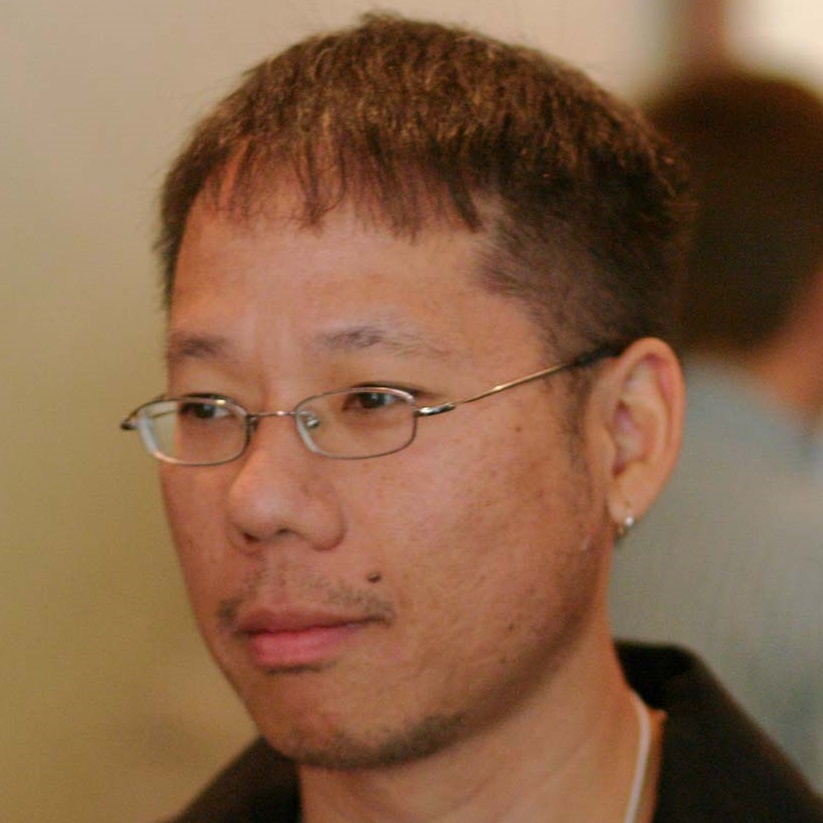
Dr Wynn Ho, University of Southampton, United Kingdom

Dr Wynn Ho, University of Southampton, United KingdomWynn Ho is associate professor in Mathematical Sciences and Physics and Astronomy at the University of Southampton. He was previously a postdoctoral fellow at Harvard-Smithsonian Center for Astrophysics and a Hubble Postdoctoral Fellow at the Kavli Institutes at MIT and at Stanford University. Wynn received his PhD in Astronomy from Cornell University and his undergraduate education from University of California at Berkeley. Wynn's primary research interests are in theoretical and high-energy astrophysics, including compact stars, radiative transfer and photon propagation in strong magnetic and gravitational fields, neutrino, plasma, and superfluid physics, accretion astrophysics, gravitational wave sources, magnetic field evolution, and stellar oscillations. |
|
| 16:00 - 16:15 | Discussion | |
| 16:15 - 16:45 |
How data quality affects the search for gravitational waves and the resulting astrophysical implications
Interferometric gravitational-wave detectors are some of the most complex instruments ever built; understanding their output is a huge challenge. Detector performance will change on a daily basis due to environmental, hardware and software issues. As such, data from the Laser Interferometer Gravitational-wave Observatory (LIGO) are typically non-stationary, containing many long and short duration artefacts. Long duration searches, such as those for the gravitational-wave background or continuous waves, are most affected by elevated noise at a given frequency, such as variations in spectral line amplitudes. However modelled and un-modelled transient searches are most sensitive to short duration noise events or ‘glitches’ which can mask or mimic a true gravitational-wave signal. These glitches can not only limit the detection of gravitational waves from the merger of black holes and neutron stars, but can also affect the ability to estimate the source parameters accurately. It is therefore important to mitigate these sources of noise at the gravitational-wave interferometers or from already recorded data. This talk will discuss the recent challenges of characterising the LIGO detectors in both the first and second observing runs (September 2015 - January 2016 and November 2016 - August 2017 respectively) and how glitches have affected the search for gravitational-waves from compact binary coalescences. 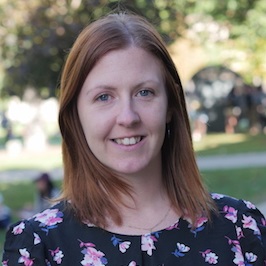
Dr Laura Nuttall, Cardiff University, UK

Dr Laura Nuttall, Cardiff University, UKDr Laura Nuttall received an MPhys in Physics, Astrophysics and Cosmology from Lancaster University in 2009, as well as the chancellor’s medal. She then moved to Cardiff University to study gravitational waves and work in the LIGO Scientific Collaboration. Her graduate research focused on electromagnetic follow-up of gravitational-wave events; she received her PhD in 2013. Nuttall then moved to the University of Wisconsin-Milwaukee where her research diversified to characterising the Advanced LIGO detectors. In 2015 she continued her doctoral research at Syracuse University, researching the application of data quality to the search for gravitational waves from the merger of compact objects. In July she returned to Cardiff University as a Sêr Cymru MSCA COFUND Fellow. |
|
| 16:45 - 17:00 | Discussion |
| 09:00 - 09:30 |
The dawn of gravitational-wave astronomy
Gravitational waves from merging black hole binaries are the most powerful events ever witnessed. LIGO's observations of binary black holes have already begun to impact astrophysical models of the formation and evolution of compact binaries and have facilitated tests of general relativity in a regime where the theory had not been tested before. In addition to binary black holes we also expect to observe binaries in which one or both the companions is a neutron star and the other is possibly a black hole. Observing the full spectrum of binaries will help us understand the origin of short gamma-ray bursts, measure the equation-of-state of dense nuclear matter, test the no-hair theorem for black holes and map the cosmic history of the formation and growth of light black hole seeds. Gravitational wave observations could also reveal processes that operate in core collapse supernovae and the mechanism of core bounce and formation of neutron stars and black holes. 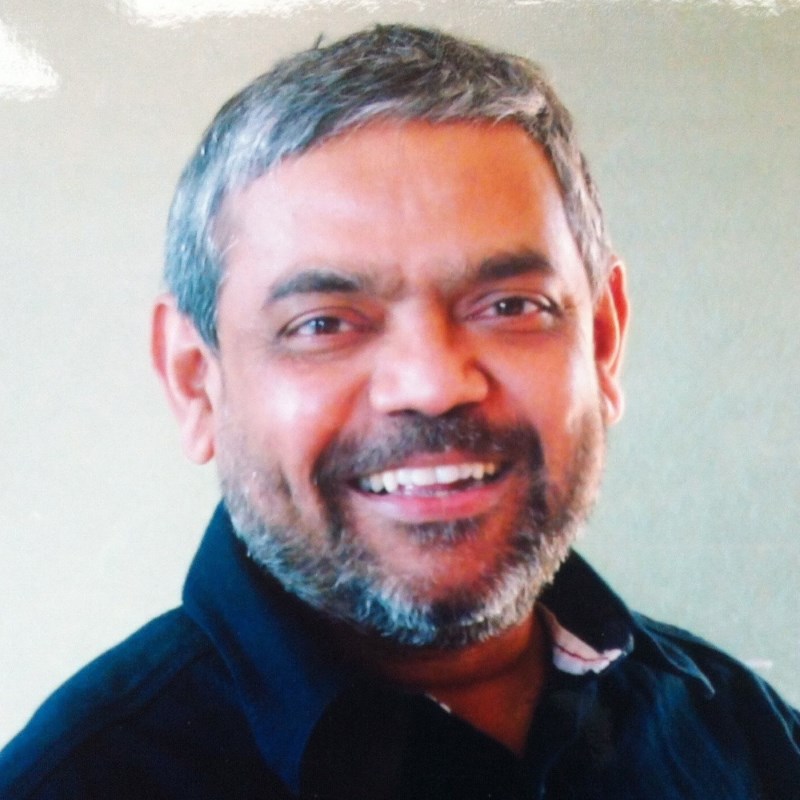
Professor Bangalore Sathyaprakash, Penn State, USA and Cardiff University, UK

Professor Bangalore Sathyaprakash, Penn State, USA and Cardiff University, UKSathyaprakash is Bert Elsbach Professor of Physics at Pennsylvania State in the US and Professor of Gravitational Physics at Cardiff University in the UK. For over 25 years he has been engaged in the worldwide effort to detect gravitational waves from cataclysmic cosmic events such as supernovae, merging binary neutron stars and black holes and the big bang. His theoretical and data analysis research was instrumental in the discovery of gravitational waves. His current research is focussed on using gravitational-wave observations to test strong field gravity, explore the nature of dark energy, infer the properties of neutron star cores and understand astrophysical properties of compact objects. He led the development of the science for LIGO-India and the Einstein Telescope project and has been involved in the space-based LISA mission. He is currently leading the development of the science case for the next generation of gravitational wave detectors. |
|
|---|---|---|
| 09:45 - 10:15 |
Low-frequency gravitational wave astronomy from space
ESA has selected The Gravitational Universe as the Science Theme for the L3 large mission flight opportunity with a foreseen launch in 2034. The LISA Consortium has proposed the LISA mission concept for this Science Theme and recently the Science Programme Committee (SPC) of ESA has selected LISA as the L3 mission. LISA will comprise 3 spacecraft at the corners of an equilateral triangle with 2.5 million km arms in a heliocentric orbit trailing the earth. It will form a laser interferometer with 3 arms and 6 laser links, observing low-frequency gravitational waves with frequencies from less than 0.1 mHz up to more than 0.1 Hz. The LISA Pathfinder mission has concluded science operations on July 18th, 2017. It has demonstrated an acceleration noise performance more than a factor of three better than required for the full LISA mission, paving the way for a timely start of LISA. 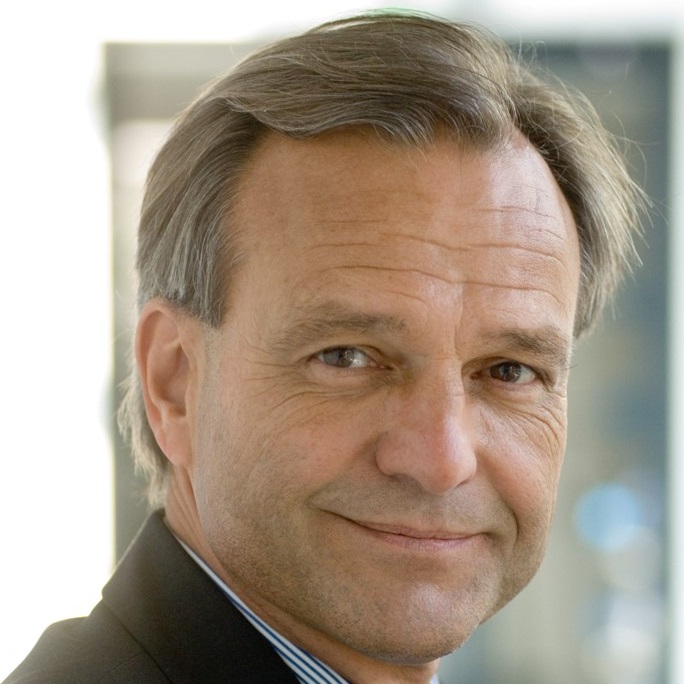
Professor Karsten Danzmann, Albert Einstein Institute Hannover, Germany

Professor Karsten Danzmann, Albert Einstein Institute Hannover, GermanyProfessor Karsten Danzmann is director at the Max Planck Institute for Gravitational Physics (Albert Einstein Institute) and Director of the Institute for Gravitational Physics of Leibniz Universität Hannover. He is working on all aspects of experimental gravitational wave detection both on the ground and in space. He is Lead scientist of the GEO collaboration operating the GEO600 ground-based gravitational wave detector, Co-PI of the LISA Pathfinder space mission and Consortium Lead for the LISA space-based gravitational wave observatory. |
|
| 10:15 - 10:30 | Discussion | |
| 11:00 - 11:30 |
Gravitational wave detection using laser interferometry beyond the standard quantum limit
Interferometric gravitational wave detectors (such as Advanced LIGO) employ high power solid-state lasers to maximise their detection sensitivity and hence their “reach” into the universe. These sophisticated light sources are ultra-stabilised with regard to output power, emission frequency, and beam geometry; this is crucial to obtain low detector noise. However, even when all laser noise is reduced as far as technically possible, unavoidable quantum noise of the laser still remains. This is a consequence of the Heisenberg Uncertainty Principle, the basis of quantum mechanics: In this case, it is fundamentally impossible to simultaneously reduce both the phase noise and the amplitude noise of a laser to arbitrarily low levels. This fact manifests in the detector noise budget as two distinct noise sources – photon shot noise and quantum radiation pressure noise – which together form a lower boundary for current-day gravitational wave detector sensitivities, the standard quantum limit of interferometry. In order to overcome this limit, various techniques are being proposed, among them different uses of non-classical light, and alternative interferometer topologies. MH will explain how quantum noise enters and manifests in an interferometric gravitational wave detector, and will give an overview of proposed schemes to overcome this seemingly fundamental limitation, all aimed at the goal of higher gravitational wave event detection rates. 
Professor Michele Heurs, Leibniz Universität Hannover, Germany

Professor Michele Heurs, Leibniz Universität Hannover, GermanyMichèle Heurs holds a diploma degree in Physics from the Leibniz Universität Hannver, Germany. She completed her PhD under the supervision of Professor Karsten Danzmann at the Institute for Gravitational Physics Hannover in December 2004. From 2005 until September 2007 she worked as a Research Fellow at the Max-Planck-Institute for Gravitational Physics (Albert-Einstein-Institute) in Hannover. In October 2007 she commenced a Research Fellowship at the University of New South Wales in Canberra, Australia, within the Quantum Electronics group of Prof. Elanor Huntington. She returned to Germany to build her own group "Quantum Control" within the Centre of Excellence QUEST (Hannover) in July 2010. Her research interests include nonclassical laser interferometry, optomechanics, coherent quantum noise cancellation, and modern controls. Since Dec. 2016 she holds a permanent professorship at Leibniz Universität Hannover. |
|
| 11:30 - 11:45 | Discussion | |
| 11:45 - 12:05 |
Use of nanovibrational stimulation ("nanokicking") to control cell behaviour and stem cell differentiation
The ability to control cell behaviour and cell fate remains a significant challenge within various fields of medical research, such as for manufacturing engineered tissues and for drug discovery. The use of mechanotransduction (how cells convert mechanical forces to biochemical cues) could provide an alternative route for providing high quality controlled/specialised cells without the requirement for chemical induction factors or complex cell scaffolds. Measurement and analytical techniques developed within the field of gravitational wave astronomy have recently been used to develop a novel technique for cell stimulation based on nanoscale vibration, referred to as "nanokicking". The technique has been demonstrated to differentiate a potential autologous cell source, mesenchymal stem cells (MSCs), into mineralized tissue in 3D. This could provide a new route for providing autologous bone grafts, which are currently in short supply, and are currently associated with pain and donor-site morbidity. In addition, other cell responses include the promotion of cell fusion in placental cell lines, in addition to modifying biofilm deposition from bacteria (P. aeruginosa), suggesting that the response to nanoscale vibration is applicable to a wider range of cell types in addition to potentially being established early in evolutionary history. The development of the current hardware for supplying nanoscale vibrations to cell cultures, and an overview of cell responses, is discussed. 
Professor Stuart Reid, Strathclyde University, United Kingdom

Professor Stuart Reid, Strathclyde University, United KingdomStuart Reid leads a multidisciplinary team at the University of Strathclyde, is a member of the LIGO Scientific Collaboration, and is co-chair of the RSE Young Academy of Scotland. He has spent the last 15 years developing technology for gravitational wave detectors, and is co-inventor of "nanokicking", where precise nanoscale vibrations are used to control the behaviour (and fate) of adult stem cells which can be used to grow bone in the lab from a patient's own cells. His team have also developed novel ECR ion beam deposition technology, alongside developing new crystalline mirror technologies in partnership with Gas Sensing Solution Ltd, which are both relevant for future gravitational wave detectors in addition to a wide array of precision optical/optoelectronic applications. |
|
| 12:05 - 12:15 | Discussion | |
| 12:15 - 12:35 |
MEMS gravimeters as a new tool for gravity imaging
The Institute for Gravitational Research at the University of Glasgow has led the development of the fused silica suspensions used to support the 40kg mirrors of the aLIGO detectors. These suspension systems required the development of ultralow mechanical loss glass structures and corresponding bespoke modelling techniques to provide the required analysis tools. 
Professor Giles Hammond, Glasgow University, United Kingdom

Professor Giles Hammond, Glasgow University, United KingdomGiles Hammond obtained his PhD from the University of Birmingham in 1998, developing a superconducting torsion balance to search for violations of the equivalence principle. He then spent two years at JILA, University of Colorado at Boulder, building inertial seismic isolation systems for the advanced LIGO gravitational wave upgrade. In 2007 Giles moved to Glasgow, working on the development of ultralow thermal noise suspensions operating at both room temperature and cryogenic temperature. He led the development, installation and characterisation of the fused silica suspension systems in the Hanford and Livingston gravitational wave detectors for the aLIGO upgrade. Giles also leads an activity within the Glasgow led quantum technology hub in quantum enhanced imaging. He has pioneered the development of a new type of gravimeter based on MEMS technology, with a sensitivity sufficient to measure the earth tides. These devices offer a transformative new way to provide cost effective monitoring of the gravitational field, with applications in the societal impact areas of energy, environment and defence. |
|
| 12:35 - 12:45 | Discussion |
| 13:30 - 14:00 |
Follow the roar and chirps: characterising the gravitation and electromagnetic radiation of compact object mergers
The first and second observational runs of the Advanced LIGO and Virgo detectors are seeing the first detections of gravitational waves (GWs) from binary black holes. Future observational runs by advanced gravitational-wave detectors should measure not only stellar-mass binary black hole mergers but other compact object mergers that comprise neutron stars. We expect such systems to emit electromagnetic (EM) emission in addition to gravitational radiation as a result of the complex merger. Such cosmic laboratories present us today with both a challenge and an opportunity. The challenge is to explain how and where these systems formed and the rich physics at play in high velocity, strongly-curved spacetime in Universe for the first time. The opportunity is to detect the joint EM and gravitational radiation with a suite of new telescopes and GW detectors. In this talk, I will first discuss how to infer and characterise the fundamental properties of the black hole binary systems with GWs. I will then summarise the EM follow-up campaigns of the first GW detections. With these GW observations in hand, I will then introduce EM counterparts of neutron star binary mergers and then discuss how to place compact object mergers in their full astrophysical context with joint gravitational-wave and EM observations. I will conclude with the unprecedented opportunities that are opening up in strong-field gravity astrophysics during the coming decades. 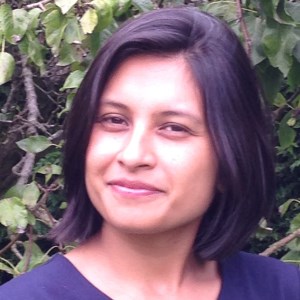
Dr Samaya Nissanke, Radboud University, Netherlands

Dr Samaya Nissanke, Radboud University, NetherlandsDetails coming soon |
|
|---|---|---|
| 14:00 - 14:15 | Discussion | |
| 14:15 - 14:45 |
The prospects of pulsar timing with new generation radio telescopes and the SKA
This is an extremely exciting time for pulsar astronomy. New facilities like LOFAR and Fermi are providing new ways to find the fastest spinning pulsars known, the millisecond pulsars. This is in conjunction with the large scale surveys with telescopes like Arecibo, Parkes, Effelsberg and the GBT, which have also contributed large numbers of new millisecond pulsars. In the very near future we have the prospect of FAST in China and MeerKAT in South Africa not only dramatically increasing the numbers of known sources, but also improving the precision to which we can measure these precise cosmic clocks. Innovative new approaches like the Large European Array for Pulsars are also helping push the limits of pulsar timing. On the near horizon we have the Square Kilometre Array (SKA), it will revolutionise pulsar searches and the precision timing of known pulsars. The improved number of sources will reveal new, more precise clocks, and more extreme binaries, such as the pulsar-black hole binary, which can provide the most stringent tests of strong field gravity. The improved precision will reveal new phenomena and also allow us to make a detection of grativational waves in the nanohertz frequency regime. It is here where we expect to see the signature of the binary blackholes that are formed as galaxies merge in throughout cosmological history. These new telescopes and their potential scientific return will be presented. 
Professor Ben Stappers, University of Manchester, United Kingdom

Professor Ben Stappers, University of Manchester, United KingdomProfessor Stappers’ primary research interests are radio pulsars, neutron stars and rapid radio transients. He is a member of the European Pulsar Timing Array (EPTA) and international Pulsar Tming Array (IPTA) projects which are attempting to use precision timing of radio pulsars to detect gravitational waves which have a freqeuncy in the nano-Hz regime. These waves are thought to have been generated by processes in the early universe, either inflation, cosmic strings or binary supermassive blackholes have been proposed. Professor Stappers is also PI of the pulsars and fast transient discovery project MeerTRAP which will run on the new radio telescope called MeerKAT. As well as using these next generation telescopes he is also involved in the specification of various aspects of the SKA itself which will be the world's largest telescope. He is currently undertaking the design work for the pulsar and fast transient search capabilities of the SKA. |
|
| 14:45 - 15:00 | Discussion | |
| 15:00 - 15:30 | Tea | |
| 15:30 - 16:00 |
High energy astrophysics and the search for sources of gravitational waves
Sources which emit high-energy radiation include many types of compact objects, such as neutron stars, black holes and binary systems. These are also likely sources of gravitational waves, and hence the probability of high energy emission associated with gravitational wave sources appears reasonably high, although far from certain. Professor O’Brien will discuss the possibilities for a high-energy electromagnetic counterpart to gravitational wave sources and how these could relate to known types of object. Detecting such emission and identifying a new source is a significant challenge for current high-energy facilities. To search the high-energy sky usually requires space-based instrumentation, although at the very highest energies ground-based Cherenkov telescopes can also provide valuable constraints. Professor O’Brien will describe the current observational facilities and those planned for the future, several of which are specifically designed to efficiently search large sky areas. 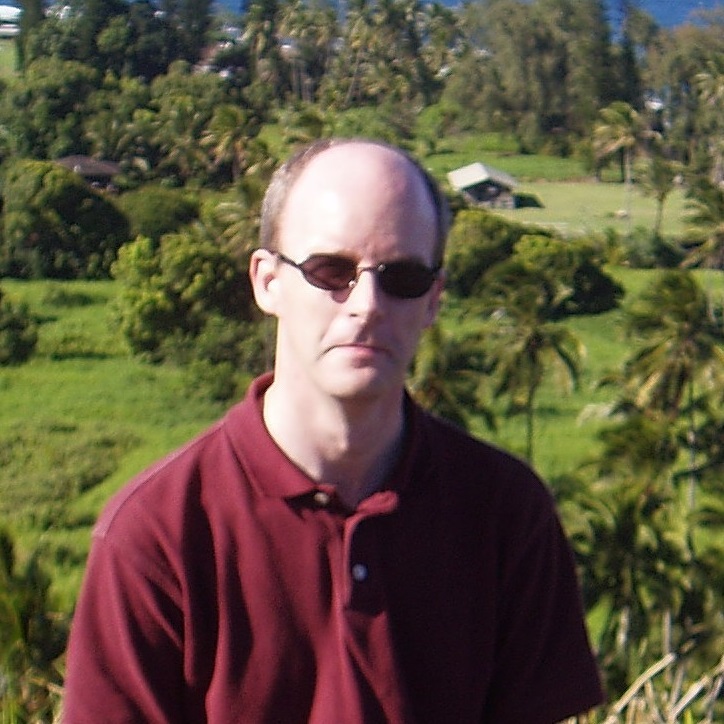
Professor Paul O’Brien, University of Leicester, United Kingdom

Professor Paul O’Brien, University of Leicester, United KingdomPaul O'Brien is a professor of astrophysics and space science at the University of Leicester, where his research is directed at investigating transient objects and compact sources of radiation in the universe. These include Gamma-Ray Bursts (GRBs) and Active Galactic Nuclei (AGN). GRBs are the most powerful transient sources of electromagnetic energy in the Universe, while AGN are the most powerful steady sources. The most powerful electromagnetic sources may also be sources of gravitational waves. Much of his research is collaborative with scientists in the UK, Europe and the USA. To obtain spectroscopic and imaging data, he uses a wide variety of ground-based and orbiting observatories, including Swift and XMM-Newton, and he is currently involved in the development of new facilities, including SVOM, CTA and Athena. |
|
| 16:00 - 16:15 | Panel Discussion |

